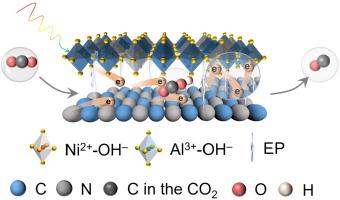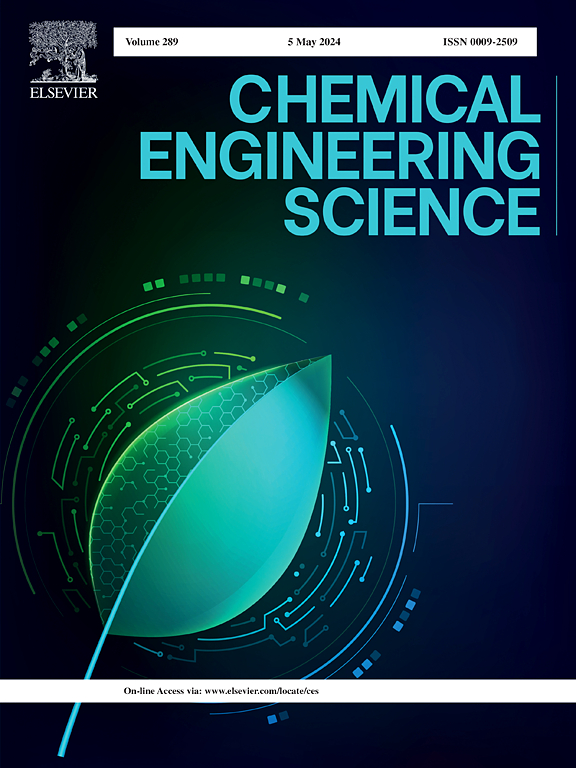Coating NiAl-LDH nanosheets on heptazine-based crystalline carbon nitride nanosheets for boosted CO2 photoreduction
IF 4.1
2区 工程技术
Q2 ENGINEERING, CHEMICAL
引用次数: 0
Abstract
Heptazine-based crystalline carbon nitride (HCCN) is a promising candidate for photocatalytic CO2 reduction because of its low toxicity and excellent chemical/electronic properties. However, pristine HCCN nanosheets show low catalytic activities due to their poor intrinsic conductivity and serious charge recombination. Herein, an efficient cocatalyst of NiAl-layered double hydroxide (LDH) nanosheets was coated on the HCCN surface via a facile electrostatic self-assembly method. The charge-transfer resistance can be modulated through the delicate design of the close contact that forms between LDH and HCCN nanosheets. Experimental characterizations reveal that the electrostatic potential (EP) is responsible for such remarkable charge kinetics, which makes it easier for them to participate in the following photoreactions. The composite of LDH/HCCN exhibits an enhanced photocatalytic CO2 reduction rate of 42.2 μmol g−1 h−1 with respect to pristine HCCN and LDH counterparts. This work provides an avenue into efficient charge transfer at the composite interface, offering an essential potential for engineering cocatalysts in artificial photosynthesis.


求助全文
约1分钟内获得全文
求助全文
来源期刊

Chemical Engineering Science
工程技术-工程:化工
CiteScore
7.50
自引率
8.50%
发文量
1025
审稿时长
50 days
期刊介绍:
Chemical engineering enables the transformation of natural resources and energy into useful products for society. It draws on and applies natural sciences, mathematics and economics, and has developed fundamental engineering science that underpins the discipline.
Chemical Engineering Science (CES) has been publishing papers on the fundamentals of chemical engineering since 1951. CES is the platform where the most significant advances in the discipline have ever since been published. Chemical Engineering Science has accompanied and sustained chemical engineering through its development into the vibrant and broad scientific discipline it is today.
 求助内容:
求助内容: 应助结果提醒方式:
应助结果提醒方式:


